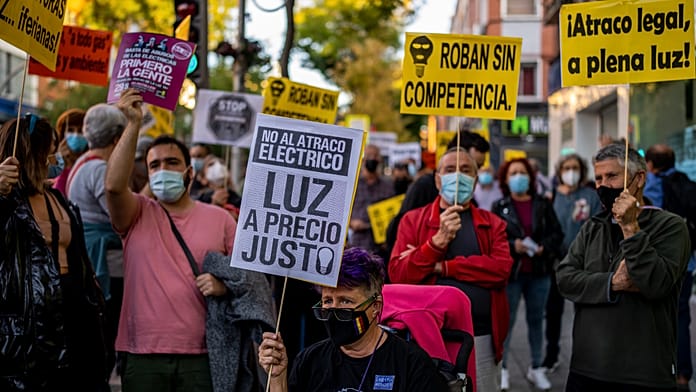Bologna University has a number of interesting museums, such as one I previously wrote about, The Palazzo Poggi Museum. Perhaps the most unusual one is the Collezione delle Cere Anatomiche, or the Anatomical Wax Museum.
Let’s have a look first at the history of the Bologna medical school.
Bologna University – Alma Mater Studiorum
The date usually attributed to the establishment of Bologna University is 1088, when masters of grammar, rhetoric and logic began teaching law. See my post Bologna’s Medieval Elevated Tombs for more on this topic.
In 1219, a papal bull authorised the teaching of medicine at the University. Subject matter included practice, theory, and also astrology, as the stars were thought to influence health.
The teaching of anatomy took place at the homes of professors until 1637, when an anatomical theatre was built at the University’s home, the Archiginnasio. You can visit the theatre for a small fee.
 The 17th century anatomical theatre was painstakingly restored after being destroyed in a World War 2 air raid, using items found in the rubble, (P. Granville)
The 17th century anatomical theatre was painstakingly restored after being destroyed in a World War 2 air raid, using items found in the rubble, (P. Granville)Major problems with the use of bodies to teach anatomy were their availability, and then their rapid decomposition due to the poor preservation techniques available at the time. Dissections were best done during winter when deterioration was slower. The theatre was busiest during Carnival time, when the public could attend the dissections of cadavers of executed criminals.
 Public dissection in the Bologna anatomical theatre. (Miniature from Bernadino Sconzani 1734. Bologna, Archivo dello Stato.)
Public dissection in the Bologna anatomical theatre. (Miniature from Bernadino Sconzani 1734. Bologna, Archivo dello Stato.)Wax anatomical models
As an alternative to the dissection of bodies, over the centuries anatomical models made from materials such as metal, wood, clay, wax and ivory were used to teach anatomy.
From the late 17th century, coloured bee’s wax models became increasingly accurate and life like. Bologna was at the forefront of this work.
 A model by Cesare Bettini of Bologna from the mid 19th century. (P. Granville)
A model by Cesare Bettini of Bologna from the mid 19th century. (P. Granville)The wax was made by boiling and filtering honeycomb. It was coloured using materials such as silver, gold, and various pigments. Blood and lymph vessels were modelled with silk and cotton thread soaked in wax. Some artists used human hair.
Two important Bolognese exponents of this modelling were Giovanni Manzolini, a professor of anatomy, and his wife Anna Morandi. After Manzolini’s death in 1755, Anna was appointed a lecturer in anatomy. Her wax models were famous throughout Europe.
 A wax self portrait by Anna Morandi. (Palazzo Poggi, Wikimedia)
A wax self portrait by Anna Morandi. (Palazzo Poggi, Wikimedia)The museum
The museum is located at 48 Via Irnerio, and at the time of writing was open from 9am (10am June to August) to 1pm Tuesday to Friday. Entry is free. The website requests you to obtain an entry ticket online beforehand, but no one asks for it. I suspect the website hasn’t been updated since the times of COVID restrictions.
After entering the main door, go up the stairs to your left to the first floor. There is also a lift.


The museum has three sections. The first is a display of wax models used to instruct students in anatomy. The second is a collection of pathological models of people who suffered from various afflictions and unusual conditions, in some cases accompanied by their skeletons.
There is also a small section that describes 19th century studies of skulls.
 The plaque inside the entry door is from the time of Pope Benedict XIV who ruled in the mid 18th century . (P. Granville)
The plaque inside the entry door is from the time of Pope Benedict XIV who ruled in the mid 18th century . (P. Granville)Anatomical Models
As described above, highly accurate wax models were used in the instruction of anatomy. A mix of science and art, they hold a strange attraction.
 The section of the museum displaying wax models for anatomy instruction. (P. Granville)
The section of the museum displaying wax models for anatomy instruction. (P. Granville)In Bologna, models were made by attaching wax handmade models of organs on the original skeletal bones.
Between 1789 and 1815, Bologna purchased models from the famed Florence based artist Clemente Susini. He produced some 2,000 anatomical models over a 40 year career. The Florence technique was to make plaster molds of organs and inject wax. This had the advantage of enabling multiple models to be made.
 A dissected head by Clemente Susini. (P. Granville)
A dissected head by Clemente Susini. (P. Granville)



Some show the detail of particular parts of the body, such as the ear.
 The ear by Clemente Susini. (P. Granville)
The ear by Clemente Susini. (P. Granville)Some models are board mounted such as this foetus and placenta made by Giuseppe Astorri, who worked at Bologna University from 1816 to 1849.
 Foetus and placenta by Giuseppe Astorri. (P. Granville)
Foetus and placenta by Giuseppe Astorri. (P. Granville)Nowadays, body parts for the instruction of anatomy are preserved by plastination, in which water and fat are replaced by plastics.
Pathological models
Whilst the first part of the museum comprises models of human bodies in a normal state, the second section contains models of people suffering from various medical conditions, genetic disorders and abnormalities.
 The pathological section of the museum. (P. Granville)
The pathological section of the museum. (P. Granville)During the 18th and 19th centuries, the anatomical school studied the bodies of people who had suffered from various diseases and unusual conditions. The anatomist would prepare detailed descriptions and drawings, a modeller working with the anatomist would create a model and the skeleton was sometimes preserved. These were then used for further research and teaching.
 The original drawing, model and skeleton of conjoined twins. (P.Granville)
The original drawing, model and skeleton of conjoined twins. (P.Granville) Itchthyosis or Fish Scale Disease is a genetic skin disorder. (P.Granville)
Itchthyosis or Fish Scale Disease is a genetic skin disorder. (P.Granville) An abnormal thumb. (P. Granville)
An abnormal thumb. (P. Granville)

 A skeleton of someone who suffered from Von Recklinghausen’s Disease. (P. Granville)
A skeleton of someone who suffered from Von Recklinghausen’s Disease. (P. Granville)An unusual exhibit is that of a preserved backbone and oesophagus with a sword inserted. The catalogue says that it is of a Bolognese city guard killed during the period of insurrection against papal rule during the short lived Roman Republic of 1849, but there is no certainty as its origin wasn’t recorded .
However, it’s hard to imagine a sword going so neatly down the oesophagus in battle, so the alternate explanation given in the museum Facebook page of a circus sword swallower’s performance ending badly seems more likely.


Phrenology
The totally discredited theory of phrenology postulated that study of the skull could reveal traits of character and personality.
 A phrenological model by Giuseppe Astorri based on the ideas of the Scottish phrenologist George Combe. (P. Granville)
A phrenological model by Giuseppe Astorri based on the ideas of the Scottish phrenologist George Combe. (P. Granville)One of the theory’s adherents was Cesare Lombroso. He proposed that criminals were born throwbacks and could be identified by the study of their skulls and other physical attributes. What’s more, he believed he could distinguish thieves, murderers, and rapists.
 Lombroso’s book L’Uomo Delinquente (Criminal Man) and two of the skulls of executed criminals collected by Luigi Calori. (P. Granville)
Lombroso’s book L’Uomo Delinquente (Criminal Man) and two of the skulls of executed criminals collected by Luigi Calori. (P. Granville)Luigi Calori, who was Professor of Anatomy at the University from 1844 until the day he died in 1896, collected over 2,000 skulls. Most are displayed in cabinets along the entrance corridor on the ground floor, but some are in the museum. Amongst the collection are many skulls of convicted criminals who were given death sentences in the mid 19th century and decapitated.
 A small part of the skull collection of Luigi Calori. (P. Granville)
A small part of the skull collection of Luigi Calori. (P. Granville)One skull on display is said to be of Athlaric, a King of the Goths who died in 534 aged just 18, having lived a short but dissolute life. In 1838 it was found in the Bolognese hills, however Athlaric died in the then Ostrogothic capital of Ravenna. It all sounds a little suspect.


After visiting the museum, you could take a short walk down Via Irnerio to the University’s botanic garden – see another of my blog posts for more information. There are more anatomical models at the Palazzo Poggi Museum, including the well known “Little Venus”.
 THE END
THE END
 10 mesi fa
595
10 mesi fa
595






















